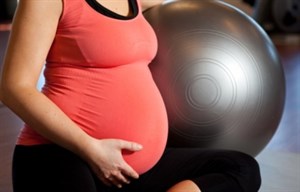- Home
- >
- Being Active
- >
- Expecting and new mums
Being active helps both you and your baby. Research shows that women who are physically active regularly report feeling better during their pregnancy than less active women.
 Pregnancy is not the time to start a demanding activity routine. Start gently and gradually build up if you are not used to being physically active. Regular physical activity - at least three times a week - is better than the occasional blast.
Pregnancy is not the time to start a demanding activity routine. Start gently and gradually build up if you are not used to being physically active. Regular physical activity - at least three times a week - is better than the occasional blast.
You might like to consider some low impact group exercise classes once you have built up a solid base fitness. Good options are pilates, yoga, tai chi, swimming or aqua jogging.
Download a list of local classes and activities suitable for mums-to-be and new mums [PDF].
Here are some key recommendations for pregnant women:
- Avoid jarring, jumping, other high impact activities, heavy lifting or challenging balance exercises after the first three months. Try gentle types of exercise, such as walking, swimming or specialised pregnancy classes.
- Don't try to be active if you’re tired or exercise until you are exhausted. Set aside time for a daily rest when you feel tired, particularly during the later stages.
- Eat plenty of healthy foods to provide energy for yourself and your growing baby.
- Drink plenty of water before, during and after an activity session.
- Don’t overexert yourself in very hot weather. An increase in body temperature can harm the foetus, particularly in the first three months.
- Wear a supportive bra, suitable shoes and loose clothing in layers so you are comfortable when being active.
- Avoid lying on your back in late pregnancy.
Download a booklet on safe physical activity ideas and when to take extra care during pregnancy and breastfeeding (Health NZ).
Talk to your lead maternity carer (LMC) or qualified exercise professional about how to adapt your usual programme, especially if you’re a sports woman, athlete or have an established exercise habit. You may be able to continue training well into your pregnancy.
Always discuss your current or proposed exercise programme with your LMC or midwife to make sure it is suitable while you are pregnant.
Stop your activity and see your doctor or midwife urgently if you experience any of the following:
- Vaginal bleeding or fluid discharge;
- Pain;
- Dizziness or fainting; or
- Persistent contractions or a reduction in your baby’s movement.
Doing pelvic floor muscle exercises can help stop them becoming weak during pregnancy and after childbirth. Try doing ten repeats of the exercises six times a day as part of your daily routine.
Check out the Pelvic Floor Exercise Guide from Physiotherapy NZ [PDF].
Your LMC, midwife or a qualified exercise professional can also give information about daily exercises to strengthen your pelvic floor. You can restart pelvic floor exercises as soon as you are able after the birth.
 It's important to ease back into activity following the birth to recover fully. It has taken your body 9 months to adapt to the changes of growing a baby. So it will take a similar amount of time for it to adapt back!
It's important to ease back into activity following the birth to recover fully. It has taken your body 9 months to adapt to the changes of growing a baby. So it will take a similar amount of time for it to adapt back!
The pregnancy hormone relaxin is still affecting your body in the first 3 to 4 months after the birth - this can last up to a year if breastfeeding. Relaxin softens the ligaments of the body, increasing the risk of injuring your back and other joints due to a loss of stability. Your pelvic floor muscles have been working hard to support the baby for the last 9 months, so they need time to regain their tone and strength.
Talk to your LMC, midwife or doctor before increasing your physical activity after the birth. A break for 3 to 4 weeks is usual following a natural birth with no complications. You may need to wait for up to 6 weeks if tearing has occurred. The stand down period is at least 8 weeks after a caesarean (C) section.
Always start gradually as this will help you to avoid overdoing it or getting fatigue. Make sure you pay attention to your body and rest often. Gentle walking and pelvic floor exercises are usually good options early on.
Ask your lead maternity carer (LMC), midwife or doctor to check your pelvic floor and abdominal separation before resuming any activity.
Pelvic organ prolapse and Rectus Abdominus Diastasis (Diastasis Recti) are two conditions caused by physical changes during pregnancy and childbirth that you should be aware of.
Download an information sheet about Pelvic Organ Prolapse [PDF].
Download an information sheet about Diastasis Recti [PDF].
Doing too much too soon - without getting the right advice - can lead to other problems later on such as urinary incontinence, abdominal hernia and tissue tears. Seek help from a specialised women's health physiotherapist if you suspect things are not right.
Breastfeeding expends extra energy so eating healthy, nutritious meals is essential once you start being regularly active.
Breastfeeding can also cause dehydration as 90 percent of breastmilk is water. Drinking 2 more glasses or 500mL of extra water a day is usually enough to compensate for fluid loss.

